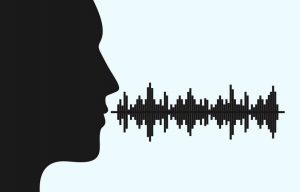How many times have we talked about the importance of Vocal Exercises For Singers ?Are you a soloist, composer, performer or choral singer? Are you passionate about singing and do it in an amateur way? For everyone, the exercises of vocalization, preparation of the vocal cords and correct breathing to reach the notes are not only useful tools, but fundamental.

There is nothing more beautiful than a human voice.Having a beautiful singing voice is an extraordinary thing. This is a gift from God and not everyone gets it especially as far as they can show it off. However, it would be a great waste to not use this talent. You must do your best to grow this ability with appropriate training, online singing lessons, and learn how to sing properly.
Expand your song’s repertoire, increase your reach, increase your head and chest sounds, and do breathing exercises: there are many ways for anyone to improve their voice, learn to sing, and increase their chances of becoming professional singers. In this article, we will provide a little vocal training and give you some singing tips to make sure your voice improves.
Vocal Technique: 10 Best Singing Exercises/Vocal Exercises For Singers.

Even really talented singers shouldn’t be complacent. Some vocal exercises are always needed. To perfect your voice, it doesn’t matter whether you learn singing techniques under the supervision of a vocal trainer or vocal teacher in your own home or in music school. Although every vocal teacher has a way they like to improve your singing skills , here are 10 of our favorite ways to practice. When it comes to vocal training, there is one word that you will often hear: repeat. Of course, don’t overdo it because you risk losing your voice.
.
- You can never avoid heating the sound. If you don’t warm up, you can damage your voice, lose your voice, or make your throat tense when performing in public. Warm-up exercises, especially for your vocal cords, are the main part of the instrument, which is the sound. Sing the entire range of your voice, with your mouth closed so as not to overexert yourself, start with a low tone and move to a high note (make sure you do it in harmony). Beginners can use the keyboard or piano to check they are doing this correctly. Don’t forget that you need to relax all the muscles involved with singing too: glottis, larynx, pharynx, diaphragm, your whole body. You should also loosen your cheeks and lips and practice your elocution.
- Respiratory muscles and abdomen go hand in hand. Learn to breathe properly and focus on diaphragmatic breathing. The best way to do this (and improve your posture) is to lie on your back and put a book on your chest: You must make sure the book does not fall when you do breathing exercises.
- Make yourself heard without shouting. Although, this is important in all musical styles, it is very important in opera singing. Your stomach will be used to ensure that your voice comes out as loud as possible. Respiratory pressure allows you to increase volume without straining too much. Almost every type of vocal range can use this technique to help their voices sound louder without the need for a microphone. Relaxing the muscles used when vocalization naturally causes the human body to recover lost air during the process.
- Be aware of your nasal cavity and where air flows when you sing. Try singing different vocals while pinching your nose. This can help you understand when you sing nasally.
- The beginning is as important as the end when singing any song. The same can be said for every note you make. This is what separates men from children. You need to take the time to physiologically analyze each sound you make and its effects. You must focus on how each sound starts, what muscles are involved, in what position your tongue is, etc. A personal vocal teacher can also discuss this with you to ensure that you don’t take on any bad habits.
- Managing stress can help you free your voice. This can be done by focusing on the cervical spine. By moving your head with your nose as a pivot point, you can relax a number of small muscles that you didn’t even know about before.
- To sing chords, you need to take the time to think about what song before you do it. You must memorize the melody on your head before your vocal cords have to do it.
- Too many singers forget about their articulation and recitation. Just like speaking in public, when you learn how to sing, practicing reclamation is very important. By learning about this, you will also help increase your confidence and reduce stage fright
- Vocals are the heart of every vocalization and you have to practice it. Use a variety of vocal sounds to relax your pharynx and larynx and learn about the accuracy of your vowels without having to overexert yourself.
- Focus on the position of your tongue which tends to be too high. Pay special attention to the places where you make different sounds.
How Can You Expand Your Vocal Reach?

Does the word tessitura sound familiar to you? The answer is definitely yes. However, it is a very important word to be known by singers. Simply put, tessitura refers to the natural range of sounds (or instruments in certain cases) in their chest sounds. This is why female singers are referred to the contraltos, mezzo-sopranos, or sopranos vocal ranges, for example. Your tessitura is generally congenital and will vary depending on your gender and age. Other factors such as puberty and menopause can also change your tessitura, and can also effectively eliminate your high pitch range.
It is very rare for singers to drastically change their tessitura and it is even more difficult to teach someone to sing a song during their vocal lessons if parts of the pitch are not sung within their reach. However, with effective training,singers can shift and expand their reach . Actually, there are lots of exercises for those who want to do this and the vocal teacher can help choose the right one for you.
Are you nervous about your singing? Maybe it’s time to ask the vocal trainer for help.You must always master the low and middle notes of your tessitura before focusing on improving it. As a general rule, high notes will be mastered using the head voice before it can be done using the chest voice. Instead of focusing on being someone, this is something that you will physically improve to be able to do. This is an exercise for your vocal cords and makes it more flexible and able to make frequencies that you previously could not do. Of course, this involves a lot of trial and error and it is very difficult to do this without the help of a professional. A personal vocal teacher, for example, will make sure you do it right.
Learn How to Improve Your Vocal Timbre

Your vocal tone is different from your vocal range. Timbre is the sound quality of the notes it produces. The color of the vocal voice is what makes us able to distinguish one person’s voice from another person’s voice. This also makes us able to distinguish between the sound of the recording and the sound of the guitar and the difference in quality between the best musical instruments and some cheap musical instruments that you find in thrift stores.
Besides singing, you also need to be aware of your presence on the stage.
Learning timbre is a way to learn more about yourself and your vocal personality. This is where we need to talk a little more musical. Just like your vocal range, you can learn your vocal timbre . However, just like your vocal range, you shouldn’t be able to change it drastically. Also, just like changing your range, changing your vocal cords requires a lot of time and effort. We often forget that breathing plays a big role in your vocal timbre, it makes your voice better, more constant, and also allows you to do vocal techniqueslike vibrato. After all the different aspects of the human voice are explored and optimized, your vocal cords will be ready to show off their best quality to the audience. That doesn’t mean you have to stop practicing singing in the bathroom!
How Can You Improve Your Voice Every Day?

Of course, singing in the shower won’t make you a pop star overnight! Did you know that you can improve your singing skills with online vocal lessons? Practicing your voice is something you must do every day if you want to improve it . There are a number of things that you need to know so as not to damage your instrument.
Remember that you need 6 to 7 hours of rest to fully recover after singing. Thus, if you don’t want to damage your vocal cords in the long run (which will be very bad for your career), you can’t work too hard. Even though surgery has made a big step, it might be better to avoid it than to get a big risk. Treat your throat and voice by avoiding things that can harm it such as soft drinks, dairy products, tobacco, and alcohol.

If you want to become a professional singer, you should consider using some (or all) of the top 10 vocal exercises that we mentioned earlier in this article. This will help you improve your singing physically and mentally. You should pay attention to the details too. Consider advancing your career by using and consulting through social media, taking additional classes, or even earning a degree, masters, or doctorate in music! Find a vocal trainer to help you learn to sing:
